Vongole clams (Ruditapes philippinarum) are the main bivalve species collected from the flat beaches of the Adriatic Sea in Northern Italy. Introduced to aquaculture facilities in the lagoon of Venice in 1983, they are now considered an invasive species, having often replaced the endemic clam Ruditapes decussate. However, despite being invasive, 95% of all Italian clam production comes from these lagoons, and 90% of the entire European harvest of clams is also sourced from there.
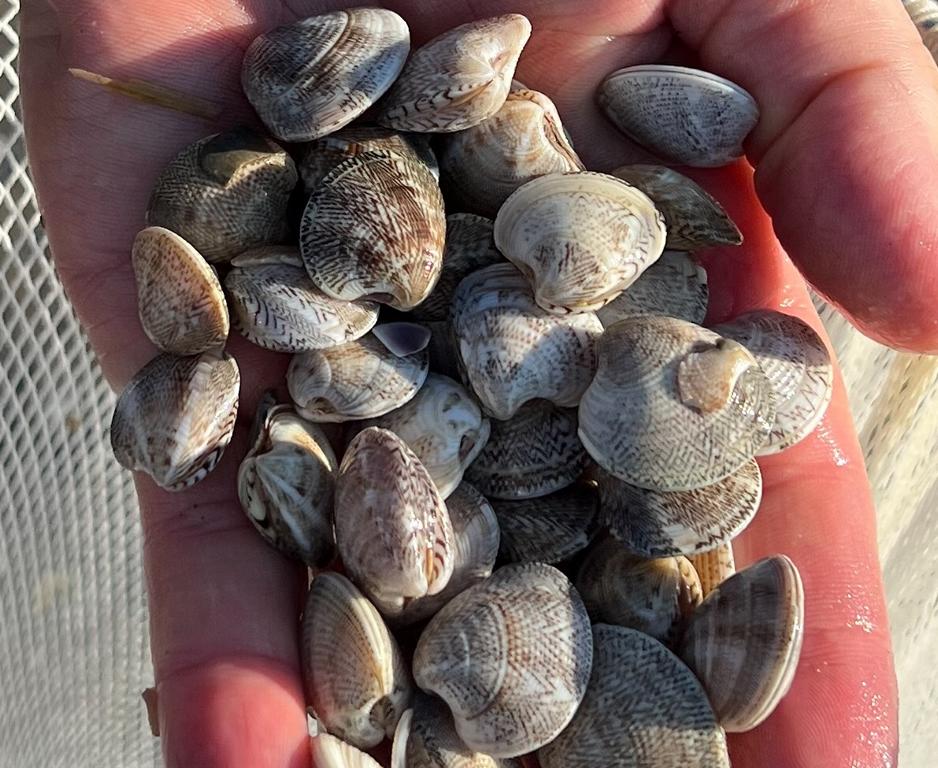
What is the correct name for vongole clams?
Due to their widespread distribution from cool to semi-tropical and tropical habitats in Asia, Europe, and the Americas, vongole clams have various common names. There are 31 different scientific names for these clams worldwide, which can be found here.
Some common English synonymous names include Japanese carpet shell, Littleneck clam, and many others. In Italy, clams are generally called “Vongole.”
General description and harvesting time
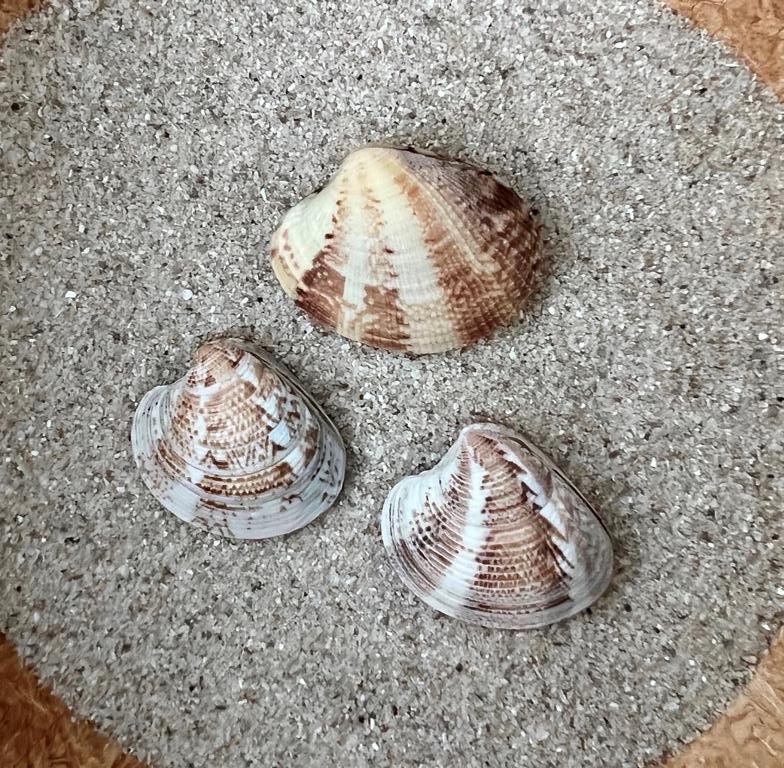
Vongole clams are commonly collected when they are 1.5–3 cm long, which can be called “baby clams” since they grow up to a maximum length of 5 cm. The color of the shells varies greatly from white to all shades of grey and brown, and they often have light- and dark-ray radial coloration and an edge-type stroke pattern.
Vongole clams are most abundant and active during the warmer months, which can range from late spring to early fall. However, they are mainly harvested in Northern Italy from late winter to late spring. Clams are filter feeders, and collecting them in the cooler months of the year is safest. Therefore, vongole clams can be collected at most times of the year, subject to legal restrictions and toxic zoning.
Where to find vongole clams?
Ruditapes philippinarum is most abundant in lower intertidal and shallow subtidal waters on sand or mud. These conditions are often found in estuaries and lagoons, where the clams are only slightly covered by sand. These clams are highly adaptable to their living conditions, and adult animals can tolerate a wide range of salinities and temperatures from 0 to 37°C, even surviving under ice cover.
There are three common scenarios for finding and collecting vongole clams. They can be found in water deeper than a shoe sole, slightly covered by seawater, or collected at low tide in wet sand not covered by open water.
Finding and collecting clams in deeper waters
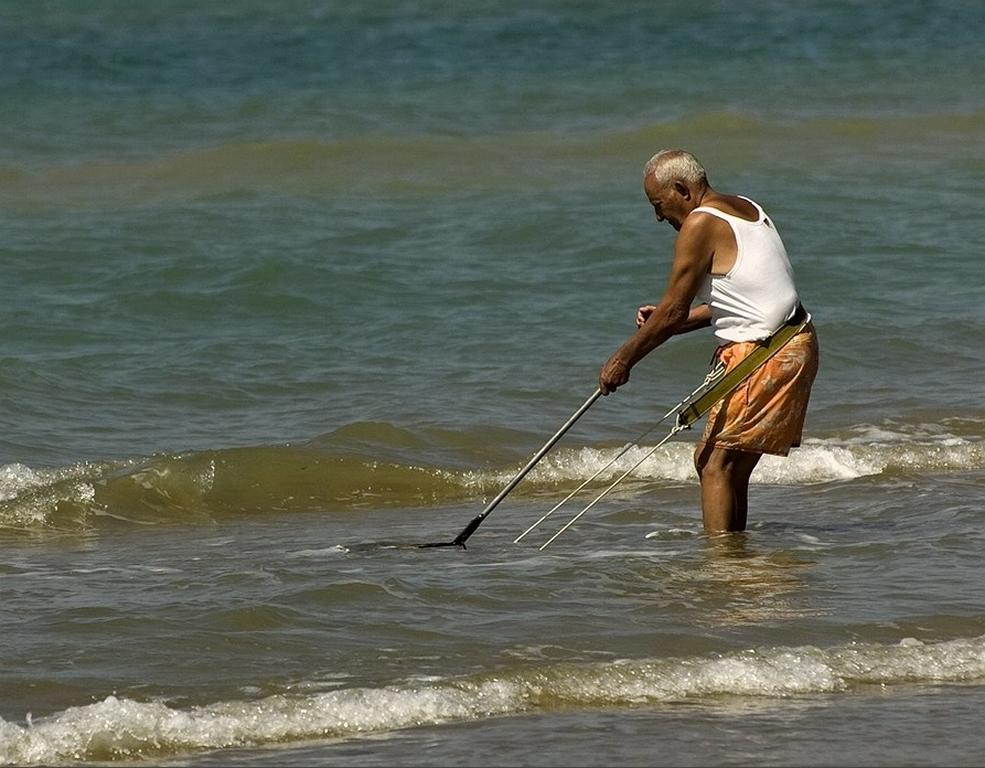
When fully covered by water, these clams are buried up to 20 cm deep in the sand. Recreational collectors walk in knee-deep waters and pull rakes through the sand, collecting the clams. A variety of gadgets are used for such a collection. However, these rakes always contain a belt for pulling them with the hips and a handle for steering the depth.
Finding and collecting clams on flats covered slightly by water
When freshly uncovered by receding waters, vongole clams will try to evade becoming dry by moving through the sand to find water again. These movements result in 10–15 cm long furrows in the sand. They indicate where live clams can be found at the end of these tracks.
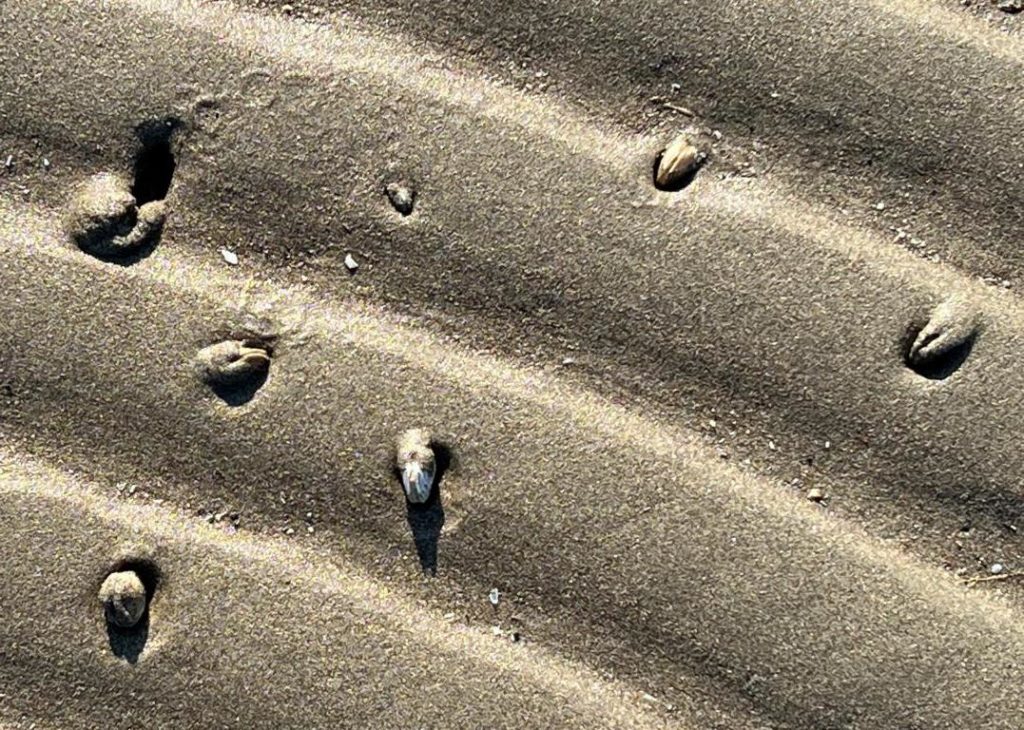

This is the most common way recreational beachcombers collect vongole clams. Collectors wear rubber boots, warm jackets, and a head cover to increase their comfort level. They look for partly covered clams and lift them with a fork attached to a stick, eliminating the need to constantly bend down to pick them up.
Some beachcombers carry a bucket filled with water to keep the clams, while others use a net to collect them, wash them in the sea, and keep them in a “base station” on dry land, which is essentially a bucket filled with water.

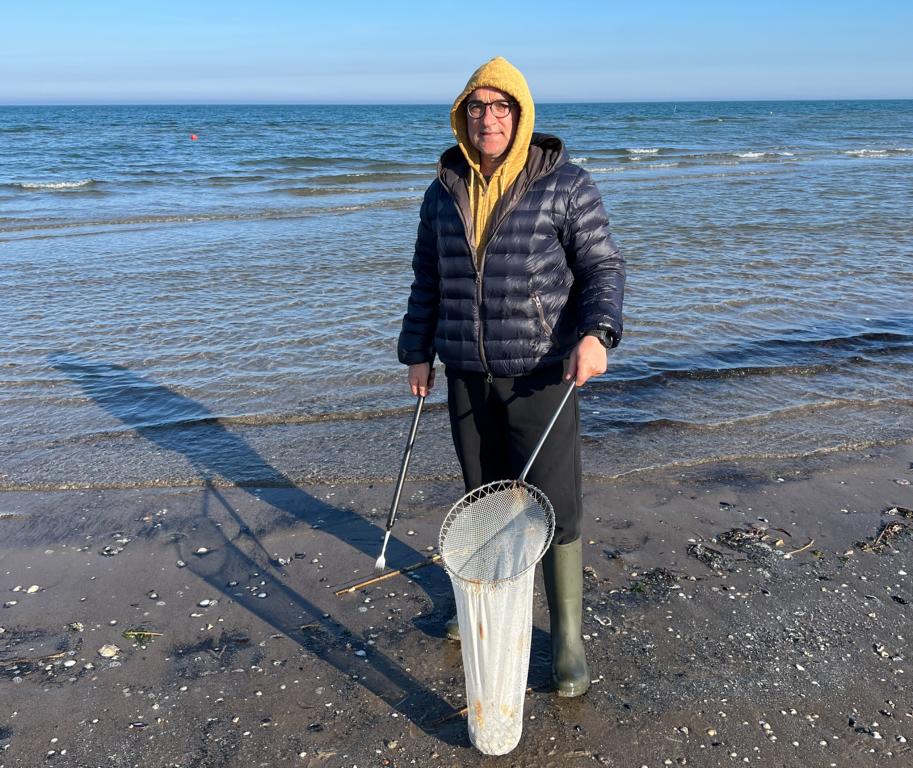
Finding and collecting clams in wet sand
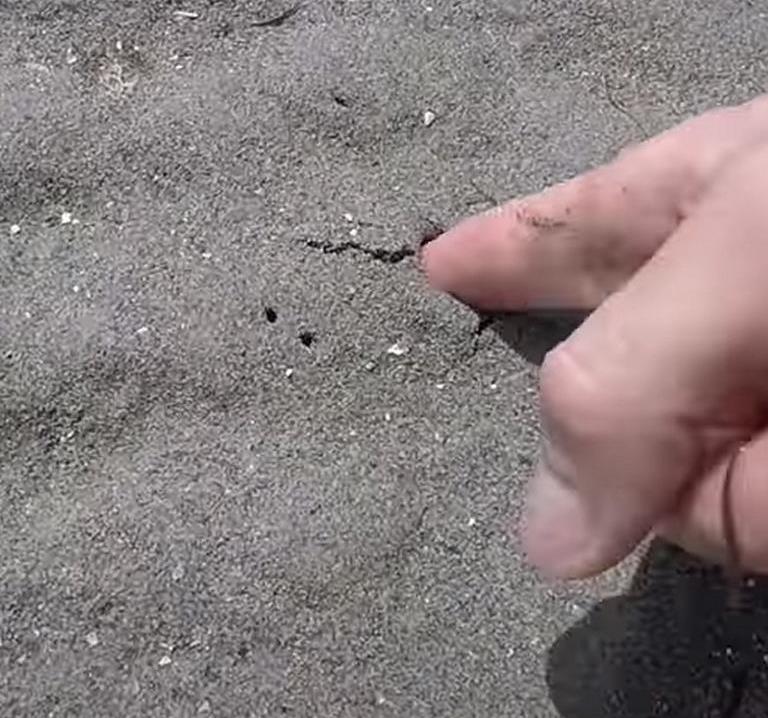
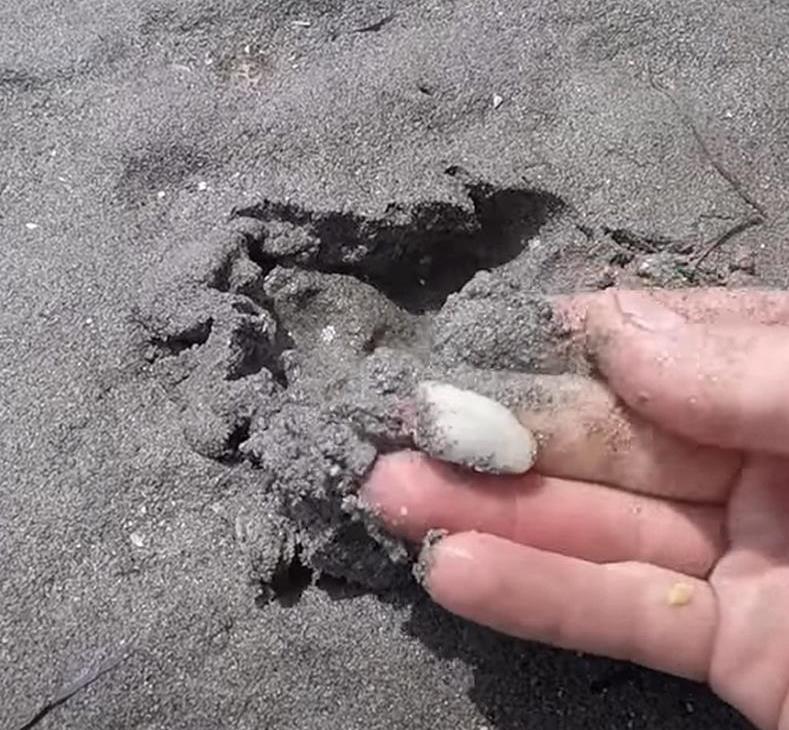
The third method involves finding and collecting vongole clams in wet sand. These clams create two small holes, called “siphon holes,” through which they draw in water and expel it. When the water recedes, the siphon holes remain visible, making them easier to locate. One can stick a finger behind these holes and pull up a live vongole clam.
Nutritional value
Vongole clams, like many other types of clams, are a good source of protein and are low in fat and calories. They also contain various essential vitamins and minerals. Raw vongole clams have 14.5 grams of protein, 1.2 grams of fat, and 72 calories per 100 grams. However, they must be prepared properly and consumed in moderation. It’s essential not to collect them from polluted waters and to remove all sand grains on and within them.
Spaghetti alle vongole
Numerous recipes exist for preparing these clams, with “Spaghetti alle vongole” being one of the most popular. This classic Italian dish, which originated in Naples, is now popular worldwide.
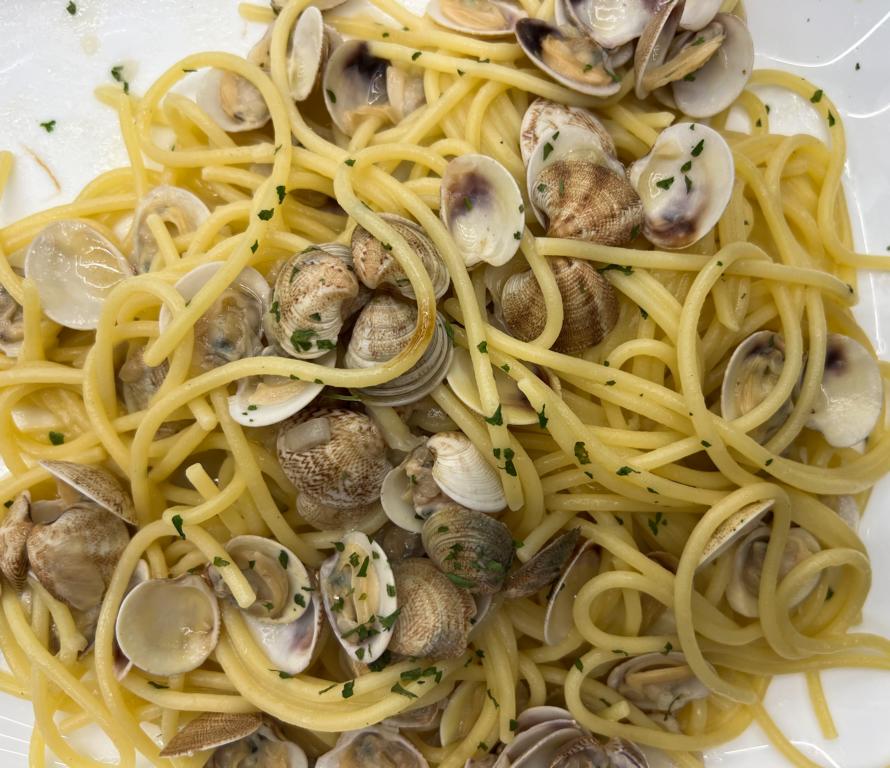
It typically includes spaghetti pasta cooked al dente with freshly steamed vongole clams in a garlic and white wine sauce. Other ingredients may include olive oil, parsley, and lemon juice, and the dish is often finished with a sprinkle of Parmesan cheese. It’s a simple yet delicious dish that highlights the natural flavor of the vongole clams.
Lessons learned from Vongole clams:
- Beachcombing for vongole clams is popular on the Adriatic Sea’s flat beaches, lagoons, and estuaries in Northern Italy.
- Most vongole clams are caught using a fork attached to a stick. They are immediately cleaned to remove most of the sand.
- Two siphon holes in wet sand at the beach clearly indicate that a vongole clam is present below.
- ‘Spaghetti alle vongole’ is a simple yet incredibly delicious dish that perfectly combines umami, salty, and sour flavors.
Further readings about Bivalves on this website:
An oyster species growing on Mangrove trees
White mussels at the Namibian coastline
Black mussels at the Namibian coastline
Collecting Pipi clams at Rawai Beach
.




